“I said if he was ever inclined to let me take a crack at it, I’d love to write ‘Green Arrow’, and that I felt I could put it in the top ten.” – Kevin Smith
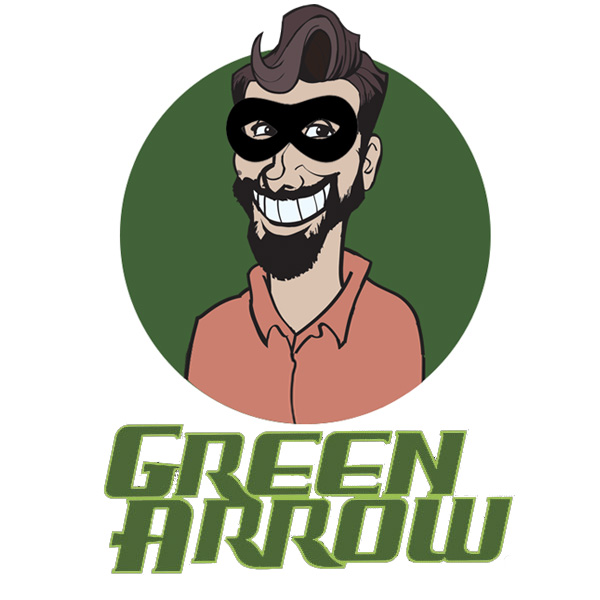 Green Arrow was dead. Or at least, Oliver Queen and the book that carried his alter-ego’s name was. When the first ongoing Green Arrow series ended in August 1998, it came in at #94 on the sales figures charts for the month. While DC Comics and the industry generally began to get nostalgic at the turn of the century, Ollie found an unlikely champion in indie filmmaker Kevin Smith, who would conclusively put Green Arrow back on the map and make him a core member of the DC Universe.
Green Arrow was dead. Or at least, Oliver Queen and the book that carried his alter-ego’s name was. When the first ongoing Green Arrow series ended in August 1998, it came in at #94 on the sales figures charts for the month. While DC Comics and the industry generally began to get nostalgic at the turn of the century, Ollie found an unlikely champion in indie filmmaker Kevin Smith, who would conclusively put Green Arrow back on the map and make him a core member of the DC Universe.
As discussed in the previous chapter of this series, editor Darren Vincenzo fully intended Ollie’s return in a rebooted series, commencing with a prestige format mini-series. Yet due to Smith’s commitments with Marvel’s Daredevil: Guardian Devil comic, and his 1999 film Dogma, the series didn’t drop until 2001. The sales increased exponentially, and Green Arrow was a Top 10 book all of a sudden. Nothing has been the same since.
In this sixth chapter of The History of Green Arrow, the original Green Arrow returns under Kevin, becomes a pivotal figure in the DCU via Brad Meltzer, Judd Winick gives him back his social relevance and a kind of peaceful ending is achieved for Oliver Queen before Flashpoint.
Also read:
- The History of Green Arrow Part 1 – From Golden Age to Golden Beard (1941 – 1969)
- The History of Green Arrow Part 2 – Hard Travelling Through the Wilderness Years (1970 to 1979)
- The History of Green Arrow Part 3 – Detectives and Dark Knights (1980 – 1986)
- The History of Green Arrow Part 4 – Longbow Hunting Through the Wonder Years (1987 – 1993)
- The History of Green Arrow Part 5 – At the Crossroads of Death with Connor Hawke (1994 – 2000)
- The History of Green Arrow Part 6 – Quiver through Brightest Day (2001 – 2011)
- The History of Green Arrow Part 7 – Losing the Beard: The New 52, ‘Arrow’ and the Contemporary Age (2011– )
The Queen is (not) dead: Kevin Smith and Quiver (2001 – 2002)
These days filmmaker and podcaster Kevin Smith is a constant fixture of San Diego Comic-Con and AMC’s Comic Book Men. Smith, the writer and director of films such as Clerks (1994), had always worn his affection for comics on his sleeve. In Mallrats (1995), his lead character Brodie (Jason Lee) was a comic book fan, and the legendary Stan Lee appears to give him advice throughout the film. His next film, Chasing Amy (1997), had a love triangle set against the backdrop of the indie comics scene, and introduces the world to the characters of Bluntman and Chronic (with art in the film provided by none other than Mike Allred). Smith even owns a comic book store in New Jersey called Jay and Silent Bob’s Secret Stash.
Prior to his work on Green Arrow, Smith had made contact with Joe Quesada at Marvel, who offered him a chance to write a Daredevil reboot. The 8-issue arc, “Guardian Devil” (pencilled by Quesada), remains one of the best examples of blind lawyer Matt Murdoch’s constant struggle with his Catholic guilt, and a classic that stands up against Frank Miller, Ann Nocenti or Mark Waid’s seminal runs.
The story of Smith’s writing work on the aborted Superman Lives film has become the stuff of Hollywood legend, not to mention the subject of the documentary The Death of Superman Lives. Smith frequently discussed it in his live Q & A shows. It was through this work that Smith came to know the folks at DC Comics, and was offered the chance to write the character. Speaking with Comic Book Resources in May 2001, he commented on this opportunity:
“I’d been up to the DC offices when I was working on the ‘Superman’ movie, and Mike Carlin introduced me to the then-editor of ‘Green Arrow’, Darren Vincenzo. I said if he was ever inclined to let me take a crack at it, I’d love to write ‘Green Arrow’, and that I felt I could put it in the top ten. A year or so later, he called me and offered me the gig. I was already talking with Joe about doing ‘Daredevil’ though, so ‘GA’ got pushed back. Then ‘Dogma’ pushed ‘GA’ back even further. It wasn’t until Bob Schreck, my old editor at Oni, got a gig at DC that I started really moving on ‘GA’. He’s a whip-cracker, that Schreckles.”
Smith’s typical confidence wasn’t unwarranted: Green Arrow #1 debuted in February 2001 at No. 6 on the Diamond Comic Distributors charts, with an estimated 85,046 preorders. Matt Wagner’s beautiful painted covers adorned the widespread promotional items, the Grendel and Mage artist signalling a return to the darker days of Mike Grell’s work. An instant hit, the book remained in the Top 10 throughout Smith’s initial arc.
The 10-issue Quiver arc opens in typical Smith style, with his beloved Batman and Superman exchanging jibes on a rooftop. Making full use of the exquisite art of Phil Hester and Ande Parks, a series of panels recalls the final pages of Green Arrow #137 (August 1998). Over the course of the series we learn that Hal Jordan, now the latest incarnation of the Spectre, had revived Ollie with only his pre-Longbow Hunters memories intact. In a wonderfully realised reveal at the end of issue #1, a rag-covered Ollie confronts a crook in an alley with a crudely fashioned soda-can arrow.
What follows is partly a romp through the DC Universe, as the amnesiac Green Arrow interacts with Batman, the Justice League and important figures from his past: Roy Harper and his ‘Pretty Bird’, Black Canary. The most important new addition is Mia, a former teenage prostitute that Ollie takes in as his young ward. (She would later go on to become the new Speedy). It’s fun, filled with Smith’s familiar style of comedy and a ripping action adventure to boot.
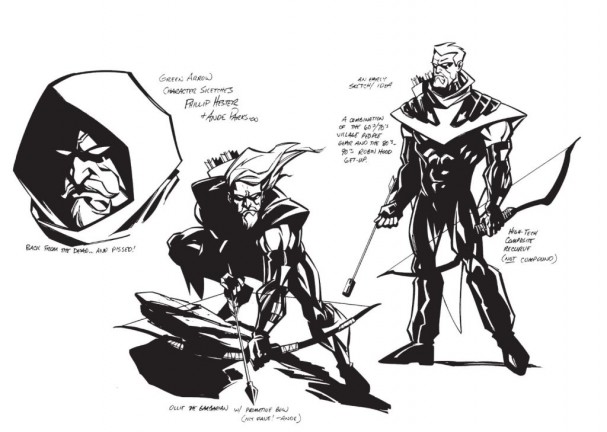
Original concepts for revised Green Arrow (Artists: Phil Hester and Ande Parks). Image originally appeared in Wizard Magazine.
The strength of the piece is that it mocks the more outrageous elements of Green Arrow’s past (boxing glove arrows), and the essential goofiness of his 1970s ‘dude persona’, while simultaneously respecting the characters in a contemporary setting. Smith can’t help but throw in a few of his own flourishes, including Wonder Woman passionately kissing Green Arrow, and (in a subsequent arc) Ollie performing cunnilingus on Dinah/Black Canary. Entertainment Weekly‘s Ken Tucker called it “Bull’s-eye revisionism”, adding that it “pins you to the wall with artist Phil Hester’s elegantly elongated figures and unpredictably shaped panels, while Smith succeeds in boiling down the Arrow mythos.”
Hester and Parks are not your typical Green Arrow artists, and this too works in the run’s favour. According to Hester’s introduction to the Green Arrow: The Sounds of Violence trade (written on 8 January 2003), the second Smith arc, the writer had been a fan of Hester’s Swamp Thing run in the mid-1990s under Grant Morrison and Mark Millar. On working with Smith, he noted:
I’ve been allowed to run rampant on the DC playground, playing with toys previously reserved for greater talents. I’ve read some of the funniest scripts before anyone but my editors, and believe me, the funniest stuff was in the panel descriptions and margins, never seen by the reading public.
Hester is being far too modest: his clean lines simultaneously convey a sense that his characters have been hewn out of the fabric that comics are made of, with Parks’ Mike Mignola-esque inks bringing new definition to familiar forms. Mirroring Smith’s script, the images are playful and light like the past they glorify, but readily immersed in the horrors that lie underneath Star City. Just as Neal Adams and Frank Giacoia made use of heightened realism that suited the audiences of the1970s, Hester and Parks do the same with their own highly stylised versions that are needed at the dawn of a new era.
The concluding chapters reveal Ollie’s friend Stanley Dover to be attempting to use Green Arrow’s soulless body as a vessel for his own longevity, but archer and soul are soon reunited, his fortune restored and continuity realigned. However, Smith wasn’t done with the characters just yet.
- Further listening: Behind the Panels Issue 80 – Green Arrow: Quiver
The Sound of Violence: Enter Onomatopoeia
After finishing up his initially solicited 12-issue run, Smith felt as though he had one more story to tell. He took the opportunity to make his most lasting contribution to the canon, and introduce a villain that would continue to resonate years later.
Onomatopoeia first appeared in Green Arrow #12 (“Feast and Fowl”, March 2012), and true to his name he entered with a “BLAM”. Imitating noises around him, he is a serial killer targeting heroes without super-powers. He comes to Ollie’s attention when he puts Connor in hospital with a bullet to the head.
“The Sound of Violence“, a 3-part arc that saw Green Arrow add the first new member to his rogues gallery in years, is a taut story that barely gives you time to breathe before it is over. Onomatopoeia remains a mystery throughout the arc, and to a large extent, he continues to do so to this day. What’s special about this story is that is also shows how important family is to the Emerald Archer, using the term “Team Arrow” to collectively refer to Ollie, Connor, Roy and later Mia. Connor in particular gets some attention for the first time since his series ended in 1998, and father and son are offered the first opportunity to bond since Green Arrow #100 (September 1995). Indeed, questions around Connor’s sexuality (a subject of Internet forum debate at the time) are directly addressed in a touching conversation between father and son. Keeping consistent with his Mike Grell days, when his family is threatened, Green Arrow responds with equivalent force.
Smith discussed the creation of the villain in a 2007 interview:
I went with Onomatopoeia for a villain, just because I loved that word, and it kind of formed the character inasmuch as he would say sounds out loud. It only kind of works – I think – on a comic book page because if you have a gun going off, they usually write BLAM! and then you can have, you know, the character saying “BLAM!” in a word balloon, but like if you tried to do that cinematically you can’t really rock it. A gun in a film sounds completely different. It doesn’t read as BLAM! and so to have a dude say BLAM! after a true gunshot, all these people would be like ‘he’s just retarded’. I think it works great in print and on a comic book page. I don’t think that character would translate very well outside of that.”
Smith would go on to reuse the villain in Batman: Cacophony (November 2008 – January 2009), pencilled by Secret Stash and Comic Book Men’s Walt Flanagan, as well as its sequel Batman: The Widening Gyre (October 2009 – July 2010). In 2014, Onomatopoeia appeared in a DC Nation Short with futuristic Ono-Bots facing off against Green Arrow and Black Canary. His pop-culture transition was complete.
Brad Meltzer and Identity Crisis (2002 – 2004)
“It all started with porn…” – Brad Meltzer
 Columbia Law School graduate Brad Meltzer was already a successful novelist when Green Arrow editor Bob Schrek approached him in January 2002, shortly before the end of Smith’s run. Meltzer had been establishing his comic fandom for years. In his debut novel, The Tenth Justice (1997), character names Veidt, Kovacs and Dreiberg would be familiar to readers of Alan Moore’s Watchmen. Sandman’s Wesley Dodds and Michael Garrick (a nod to original Flash Jay Garrick) could be found in The First Counsel (2001).
Columbia Law School graduate Brad Meltzer was already a successful novelist when Green Arrow editor Bob Schrek approached him in January 2002, shortly before the end of Smith’s run. Meltzer had been establishing his comic fandom for years. In his debut novel, The Tenth Justice (1997), character names Veidt, Kovacs and Dreiberg would be familiar to readers of Alan Moore’s Watchmen. Sandman’s Wesley Dodds and Michael Garrick (a nod to original Flash Jay Garrick) could be found in The First Counsel (2001).
Meltzer had been reading Green Arrow comics since he was 12, and he shared a room with fellow comic book writer (and future Green Arrow scribe) Judd Winick during his college years. Indeed, the lead character in Meltzer’s book The Millionaires (2002) was named Oliver. He had been building to this job for much of his life, but he naturally approached the project with trepidation. Speaking with journalist, author and Green Arrow superfan Jayme Lynn Blaschke in April 2002 (for Revolution SF), Meltzer commented: “Following Kevin Smith is like following a 500 pound gorilla. You’re talking about someone who took a character who’s been quite literally dead for years…and made him be the most popular title in the DC universe and arguably the comics universe…”
Joined by Hester and Parks on art duties, Meltzer’s concept was deceptively simple. In The Archer’s Quest (Green Arrow #16 – #21, October 2002 – April 2003), Ollie spots a face he doesn’t recognise from photos of his own funeral. It begins a quest to track down memorabilia of his past, revealing some home truths about Ollie in the process. As Meltzer notes in the afterword to the collected edition, “it all started with porn.”
“On January 19, 2002…my friend Noah…told me about this concept called porn-biddies he’d seen on BBC television. As Noah explained (and trust me, Noah knows his porn), a porn-buddy is a contingency plan. When you die, your porn-buddy is the friend who goes to your house…and destroys all your porn so no one finds it. That is a beautiful idea…It’s so ruthlessly brilliant. It works with any idea. And that’s when it hit me. If anyone needs a “porn-buddy”, it’s someone with a secret identity.”
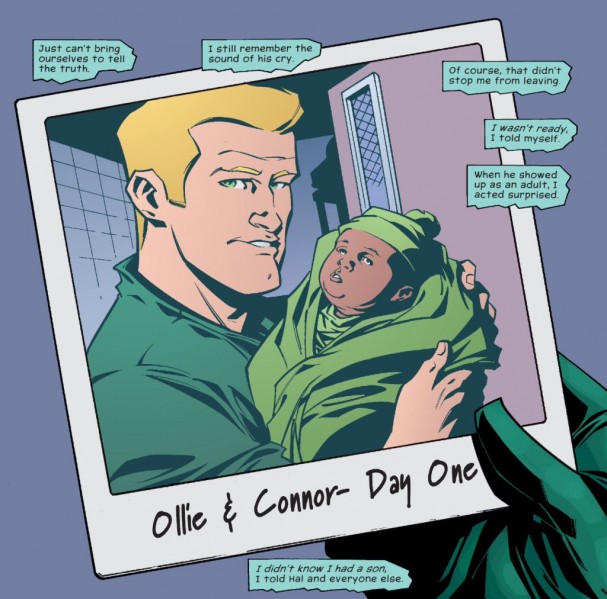
“Just can’t bring ourselves to tell the truth”. The emotional reveal of Green Arrow #21 (April 2003)
Apart from revealing that Oliver’s middle name is “Jonas”, and destroying the long-forgotten Arrowcar at the hands of Solomon Grundy in the process, it’s revealed that Oliver knew about his son Connor from birth, and had been running from the truth. Ollie didn’t simply meet him shortly before his own (first) death. Oliver finds an old photo of himself and the infant Connor. In one panel, all of our notions of Oliver are changed, but it also gives readers a notion of just how much this character has progressed over the last few decades. Few characters do that over multiple arcs, and Meltzer managed to do it in single page. As he told Newsarama before the series launched, his story will “knock Oliver Queen on his ass…Smith has spent the last year and a half bringing Oliver Queen back from the dead. Now I feel that it’s the time to return him to his life.”.
Like Smith, Meltzer had one more important story to tell. The following year, he returned to writing comics with the 7-part standalone mini-series Identity Crisis. Ostensibly a murder mystery, it follows the aftermath of the murder of Sue Dibny, the wife of the Elongated Man. Remaining one of the most controversial comic books of the last decade or so, the revelation of rape and murder are used as a plot point that unravels darker secrets in the DCU. Yet the mini-series remains a gripping read, just not one for people who like to remember their heroes with Silver Age glasses.
Judd Winick and the return of relevance (2003 – 2008)
“Judd IS Oliver Queen…If John Wayne were a liberal he would be Judd.” – Phil Hester
Writer and cartoonist Judd Winick first came to the attention of the wider public after appearing on the reality show, The Real World: San Francisco in 1994. Meeting Pedro Zamora, an AIDS positive educator and activist, their friendship and Zamora’s death later formed the basis of the beautiful and heartbreaking graphic novel, Pedro and Me (2000). His meta-series The Adventures of Barry Ween, Boy Genius (Oni Press, 1999 – 2002) garnered Winick a dedicated fan base, before moving into more mainstream fare with DC’s Green Lantern. Yet in the 36 issues he wrote between 2000 and 2003, Winick never stopped making socially relevant comics. In Green Lantern #137 (June 2001), a character reveals he is gay. Later, Winick tackles homophobia more directly in “Hate Crime” (Green Lantern #154, November 2002), when Kyle Rayner’s gay friend is brutally attacked and left for dead.
With well over 60 Green Arrow issues across two volumes under his belt, Winick remains one of the most prolific writers on the character to this day, perhaps only challenged by Mike Grell. Following a collaboration with Ben Raab on 6-part retro Green Lantern/Green Arrow crossover “Black Circle: Urban Knights”, the first team-up of Oliver Queen and Kyle Rayner, Winick got down to work in Green Arrow #26 with the “Straight Shooter” story arc. Expanding the Green Arrow rogues gallery, we are introduced not only to an army of grey trolls, but the skilled assassin Constantine Drakon who almost kills Team Arrow.
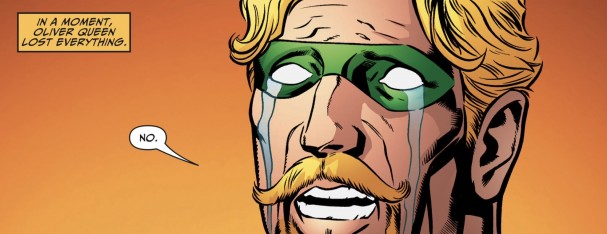
Almost everything – Green Arrow #59 (Volume 3, April 2006). Art by Paul Lee, Dan Davis and Guy Major
Yet the two main villains that dominated Winick’s initial run were undoubtedly the mob-boss Brick, who lives up to his name with a reddish stony skin, and Dr. Light in a post-Identity Crisis world. Then there was rival archer Merlyn, who had been fighting Ollie since 1971’s Justice League of America #94. Winick made Merlyn, who really had been something of a one-note villain, more deadly than he’d ever been before. Working in concert with Dr. Light’s machinations, the story culminates in Green Arrow #59 (“Until the End of the World, Part 2: When it All Comes Down to This, It’ll All Just Come Down”, April 2006), with Team Arrow in tatters. Ollie watches helplessly from a rooftop as Merlyn pushes the button that triggers explosions across the city. “In a moment, Oliver Queen lost everything”, Winick writes in a caption, before Merlyn impales him on two of Ollie’s own arrows. It is a classic modern moment so instantly powerful that it was used as the season finale to the first year of the Arrow TV series (“Sacrifice”, 15 May 2013, The CW).
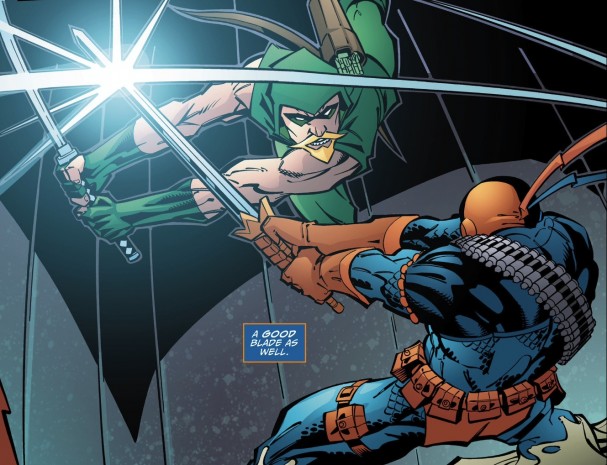
New look, new skills.Green Arrow #59 (Volume 3, June 2006). Art by Scott McDaniel, Andy Owens and Guy Major.
All is not lost, of course. The DC universe jumped all of its continuities forward a year (as part of the Infinite Crisis “One Year Later” crossover), with Ollie having survived and subsequently becoming Mayor of the recovering Star City. It’s a storyline that harks back to Eliot S! Maggin’s “Nothing But a Man” tale from World’s Finest Comics #255 (February/March 1979), and traces its origins to “What Can One Man Do?” (Green Lantern #87, December 1971). Ollie uses his power as mayor and as Green Arrow to keep Star City safe on two fronts. The interim months, we later learn, saw Ollie and his Team Arrow realising bows and arrows were not enough, and becoming proficient in martial arts and even swordplay. In Green Arrow #61 (“Crawling Through the Wreckage, Part 2: Green Party Agenda”, June 2006), he gives the dread Deathstroke a run for his money. In addition to brandishing a sword, which he is quite good with, Ollie sports new threads that combine the classicism of Neal Adams with the urban hood of Mike Grell.
Of course, jumping back a few issues, two of the most important developments in the Winick era both concerned the character of Mia Dearden. During the “New Blood” story arc, the former teenage prostitute is tested positive for HIV. At first she tries to shrug it off, but over the course of many issues, we get to witness her personal growth (and that of her adopted family), something that Winick had personally seen up close with his friend Pedro Zamora.
A subject that had been close to Winick’s heart since his earliest work, the issue and storyline gained international attention and mainstream news coverage. On CNN, Winick noted that at its core, it was a human tale. “We’re telling a story about a horrible situation and someone rising above it.” Winick went on to draw some clear parallels between Mia’s story and Pedro’s. Aside from noting that both characters were 17 when they discovered they had tested positive, both Pedro and Mia make announcements to their assembled high school colleagues.
In 2000’s Pedro and Me, Zamora is quoted as saying “I am here to tell you that you should be very frightened of AIDS, not people living with AIDS…I am not dying. I am living with AIDS. Living.” Mia repeats these words almost verbatim in “New Blood Part Six: Coming Out” (Green Arrow #44, January 2005). Ollie, counter to his liberal leanings, has a tough time dealing with it (possibly mirroring his poor reaction to his former ward Roy Harper being “a junkie”). Yet by the end of the issue, Mia has taken on the mantle of Speedy, complete with a new costume and the focus to use whatever time she has to do the right thing by her city. It’s one of those beautiful moments of superheroes becoming real, a fictional character becoming a mouthpiece not only for the AIDS cause in the DC Universe, but continuing the work of Pedro Zamora by educating readers about a very real issue. Winick simply stated: “I figured one hero story should follow another.”
Continuing to play out this story while the exciting saga with Brick played out as the main story, Winick managed to deliver the same educational approach as his previous works without diverging too much from the character. Speaking with NPR on World AIDS Day (1 December 2004), he discussed bringing back this notion of relevancy to a character that in many ways began the trend:
We write it with the 14 year old and the 45 year old in mind. We write it so that a younger reader will understand it, and take it in, but also write above them. I’m not writing this didactic book, but we’re not trying to simplify anything…Truly what are superhero stories about? They are about fighting evil, they’re about beating the bad guys and they’re about our heroes overcoming obstacles, and what could be a greater obstacle than a young woman who’s facing a life threatening illness, and to turn around and want to do good? To want to fight, and want to try and help the world.
Mia would later date a British rogue named Dodger and briefly move to London. With Roy Harper as the Red Arrow, she switches to a black and gold costume. While the character is yet to reappear post-Flashpoint (see below), and her ultimate fate remains unclear, Smith and Winick made one of the first new Arrow family members in over a decade, one that remains compelling to this day.
Important!
Green Arrow: Year One (2007)
In the wake of the renewed popularity of the character, DC decided that a definitive and updated origin story was needed. The powerhouse team of Andy Diggle and Jock (The Losers) brought the Emerald Archer screaming into the 21st century in 2007, with a 6-issue mini-series that gelled the Jack Kirby origin story from Adventure Comics #256 (January 1959) with the gritty realism of Diggle and Jock’s other works. Speaking with Re/Action in 2011, Diggle explained his motivations behind updating the character:
I took this inherently hokey character, which I always thought was really cheesy and laughable and just crap, and thought, well, okay, how would I turn that into an Andy Diggle comic? [W]ith Green Arrow Year One, I realised that a) no one had told that origins story for about thirty, forty years, whatever it was, and b) it’s a hunted man thriller, rather than a superhero story. There’s no spandex, there’s no superpowers, there’s none of that. It could happen in the real world.
While Diggle may not have been aware of The Wonder Year (1993), it had been a while since the origin was updated. The structure of the story remains essentially the same, with Oliver Queen a boorish trust-fund baby who is more of a thrill-seeker than an actual adventurer. After being betrayed and stranded on an island after a drunken night, he must learn to survive on an island. The smugglers of the original tale have been updated to enslaved native island dwellers, forced to manufacture heroin under the thumb of China White. In a twist on his ward Speedy being an addict, Ollie himself succumbs to the dragon while recovering from an injury. It is one of those natives, Taiana, whose selfless acts not only inspire Ollie to do good, but gives him the name Green Arrow. Filled with nice touches that refer back to previous works, including his bow originally belonging to archery expert Howard Hill (as Mike Grell first noted in The Longbow Hunters), it’s a tight retelling of a tale familiar to fans with modern flourishes.
Necessarily recalling Frank Miller and David Mazzucchelli’s Batman: Year One (1987), Diggle doesn’t attempt to contradict anything that came before, and instead fleshes out and gives a new perspective on a island story that was used wholesale in TV’s Arrow. Artist Jock also follow’s Mazzucchelli’s deep shadows and his recognition that minimalism in pen and ink are where heroes are most real. This remained the official origin story until Flashpoint rebooted the entire DC Universe in 2011. Regardless, it remains an essential piece of reading.
- Further listening: Behind the Panels Issue 27 – Green Arrow: Year One
Green Arrow/Black Canary: partners against crime
Winick’s original run ended with Ollie proposing to Dinah (Green Arrow #75, August 2007), bringing a forty year courtship to a new level. While Winick originally planned to leave after this issue, but he continued on into the “rebooted” Green Arrow and Black Canary series, which effectively was a continuation of the story that started in the previous volume. Green Arrow and Black Canary had always been unique, in that they were depicted in unmarried domestic bliss throughout much of their career.The only reason they hadn’t settled was due to a dramatic contrivance rather than any legitimate narrative reason. Winick noted to IGN in September 2007:
There are a lot of longterm relationships in comics, the most obvious being Clark Kent and Lois Lane or Peter Parker and Mary Jane. Reed and Sue Richards were the only two heroes we could go all the way back to and read where they got married and had kids.
 Following a Green Arrow/Black Canary Wedding Special (November 2007), illustrated by Amanda Conner with a delightfully trashy wedding dress for Canary (a white variation on her costume, complete with fishnets), it was revealed that Ollie had been replaced before the wedding. When that doppelgänger (who turns out to be shape-shifter Everyman) attacks, audiences were left thinking Dinah had killed Ollie on their wedding night, but instead a manhunt begins for the kidnapped archer in the new volume Green Arrow and Black Canary.
Following a Green Arrow/Black Canary Wedding Special (November 2007), illustrated by Amanda Conner with a delightfully trashy wedding dress for Canary (a white variation on her costume, complete with fishnets), it was revealed that Ollie had been replaced before the wedding. When that doppelgänger (who turns out to be shape-shifter Everyman) attacks, audiences were left thinking Dinah had killed Ollie on their wedding night, but instead a manhunt begins for the kidnapped archer in the new volume Green Arrow and Black Canary.
The title is significant because it does not imply that Canary is a sidekick or a super-wife: it implies partners and equals, the way Green Lantern/Green Arrow did in the 1970s. The title font is even styled to look like that classic run. Initially under Winick, and with gorgeous art and covers by Cliff Chiang, that relationship is tested in the same way that Grell did, pushing the notion of their marriage, adding in the kidnapping and brainwashing of Connor Hawke and fully integrating the notion of “family” into the Arrowverse. Connor even briefly exhibits metahuman healing powers, losing his archery skills, but retaining his martial arts abilities.
Andrew Kreisberg, a television writer known for The Simpsons, Boston Legal, Fringe, and The Vampire Diaries, would take over the title from Green Arrow and Black Canary #15 (February 2009), and test that relationship further. After reintroducing the villain Merlyn, Kreisberg created the character of Cupid (aka Carrie Cutter), a former special-ops soldier who becomes romantically obsessed with Ollie after he “saves” her from a husband she was, in fact, attempting to kill. Kreisberg, alongside Marc Guggenheim, and Greg Berlanti, would later go on to develop the Arrow TV series.
After all that, the duo realised that they were never legally married, so what began as a promising progression finished as yet another means of keeping this decades old relationship in a perpetual state of limbo.
Collectors should note that the numbering gets a little confusing around here. This series begins with the Green Arrow/Black Canary Wedding Special, continues in Green Arrow/Black Canary #1 – #29, before reverting to good old plain and simple Green Arrow #30-32.
Cry for Justice: The Rise and Fall of Green Arrow and his Brightest Day (2009 – 2011)
The final chapter for the “old school” Oliver Queen, prior to DC rebooting the continuity in favour of the New 52, is also one of the most moving of the modern interpretations of the character. Following a Blackest Night tie-in, Green Arrow is briefly transformed into a Black Lantern, and during that state throws some shade on his relationship with sometimes estranged son Connor Hawke. Yet it is the events of James Robinson’s Justice League: Cry for Justice (September 2009 – April 2010) that would define the final chapter of the Modern Age Green Arrow.
A thematic sequel to Meltzer’s Identity Crisis (see above) in many ways, Green Arrow and Green Lantern quit the Justice League after a confrontation involving the brining of villains to justice. Throughout the series, a villain named Prometheus plagues the League, his single mission to hurt the heroes. In addition to ripping one of Roy Harper/Red Arrow’s arms off, he blows up Star City, killing Harper’s daughter Lian in the process. After being forced to let Prometheus go, Green Arrow ultimately tracks him down to his lair, shooting him between the eyes and killing him in cold blood.
Green Arrow had killed before, and spent time repenting in an ashram, but this is the first time he had done so wilfully. Yet in a bold move, DC and writer J.T. Krul held him accountable for his crimes. In an ambitious crossover that encompassed the Justice League: Rise and Fall Special #1, Green Arrow #31-#32 (“The Fall of Green Arrow”) and Justice League: The Rise of Arsenal #1-#4 (May – August 2010), Ollie is ultimately confronted by the League, has his engagement ring returned to him by Dinah, and turns himself in for his crimes. In recognition of his services to the decimated city, Ollie is not sentenced to prison but is instead exiled from the city limits. (Sidebar: elements of The Rise of Arsenal are notoriously divisive, including a scene in which not-so-reformed junkie Roy fights off thugs while cradling a dead cat!)
What begins is not only another reboot (with Green Arrow #1, August 2010) and “Brightest Day” crossover tie-in, but something of a shamanistic quest for the Emerald Archer, a voyage of self-discovery that comes complete with an actual Galahad. In the wake of the destruction of Star City, a mysterious star-shaped forest has cropped up in the wreckage. At first it is a home for Ollie, embracing the Robin Hood mythos and Arthurian guilt with gusto, but soon the duelling forces that control the woods force him back into the life of a hero. On the outside, a self-proclaimed “Queen” has taken over the company his father founded, and is destroying his legacy. By the end, the hero comes to the conclusion that Mike Grell did in the ‘urban hunter’ era of the 1980s: “Because for me…the city is my forest.” (Green Arrow #12, July 2011).
Thinking of it as a way to tear down Ollie to build him back up again, Krul told CBR in December 2010 that the arc also provide him with a chance to explore the impact Ollie’s parents had on his life, an issue that hadn’t been touch much in decades:
So with this whole arc and what carries on through to the end of “Brightest Day” is this notion of Ollie’s view of himself and whether or not he views himself as a hero and whether or not he can be a hero again. Obviously, he is a hero in many people’s eyes, and I think he’s a hero, but in his own mind, he’s got a damaged self image. This whole arc with the forest and what the forest is forcing him face and confronting him with is the giving him the opportunity to recover and regain a positive self image.
While the story came to a natural conclusion with Krul’s run, the series awkwardly sputtered out for another 3 issues under writer James Patrick and artist Agustin Padilla. The story itself, which sees Ollie recruited by the US Marshall service, is actually an action-packed piece that recalls Chuck Dixon’s days of espionage and meta-battles. It’s just that immediately after Krul’s beautiful arc, and being what effectively amounts to the last Modern Age Green Arrow story, it’s an incongruous piece. On the one hand, it does show Ollie’s return to grace, even being offered a chance to be a US Marshall. Perhaps in some multiverse, he took up that offer, but instead we see him walking off into the sunset.
Then everything changed.
Flashpoint: Green Arrow Industries (2011)
A crisis by any other name, the 5-part Flashpoint debuted in May 2011 and would change the course of the entire DC Universe. The series, written by Geoff Johns and gorgeously illustrated by Andy Kubert, saw The Flash wake up to a world vastly changed, and only he knew anything was different. It eventuated that the timelines had been altered, and only speedster could correct history, but not without significant costs.
From a publication point of view, the series ended with The Flash choosing between three distinct publisher’s timelines: DC (New Earth), Vertigo (Earth-13), and WildStorm (Earth-50).What emerged on the other side was a combination of all three, as DC relaunched their entire line, just as they had done in the 1980s. It would be called The New 52.
A series of one-shots were released in this period, and Green Arrow was one of the characters to get a spin-off. In Flashpoint: Green Arrow Industries (June 2011), written by Pornsak Pichetshote and drawn by Mark Castiello and Ig Guara, Ollie is the head of the titular company that manufactures arms and has a major military contract. In a flashback to the corporate thinking of the early 1990s, and the “CrossRoads” event, Green Arrow is seen on the striking and purposefully evocative cover (by Viktor Kalvachev) toting two large guns instead of his regular bow and quiver.
by Pornsak Pichetshote and drawn by Mark Castiello and Ig Guara, Ollie is the head of the titular company that manufactures arms and has a major military contract. In a flashback to the corporate thinking of the early 1990s, and the “CrossRoads” event, Green Arrow is seen on the striking and purposefully evocative cover (by Viktor Kalvachev) toting two large guns instead of his regular bow and quiver.
Of course, none of that provocation can be found expressly inside the book, but nevertheless it’s a classic piece of counter-world plotting. Ollie is a genius, but he steals weapons from super villains for use in his own productions. Nodding to his origin, he builds a secret weapons factory on an island, and an adult Roy Harper is his right-hand man. The father of “eight different kids from eight different women”, Ollie is more like a pre-Iron Man Tony Stark, espousing conservative economic thinking, and blind to the suffering his company is causing. It’s the polar opposite to his left-wing persona we’ve known for years, and his views are challenged by Roy shortly before being killed by an assassin squad led by what turns out to be his estranged daughter from a coupling with the villain Vixen. “I couldn’t shoot a bow and arrow if my life depended on it,” remarks the Elseworlds Ollie, before arguing that corporations can be used for good. Of course, we are left with the sense that this particular Queen won’t find his moral compass. As the body of the assassin is taken away, he simply remarks “I’m just some guy who makes missiles.”
Beyond the Comics
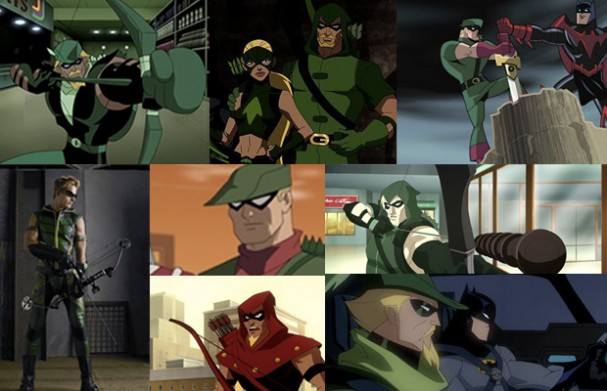 For the first time since 1973’s Super Friends appearance, Green Arrow was finally back on television. Rather that one simple throwaway appearance with catchphrases like “Great flaming arrows!”, Ollie was chosen to lead the first episode of Justice League Unlimited (“Initiation”, 31 July 2004, Cartoon Network). A classic take on the character, he was voiced by Kin Shriner, who reportedly turned up to the recording dressed as the archer! Teaming up with Black Canary (“The Cat and the Canary”), Supergirl and The Question (“Fearful Symmetry”), the Huntress (“Double Date”) and of course, Green Lantern (“Far From Home”), it’s the depiction that fans had been clamouring for since the 1970s. Indeed, in the episode “Flashpoint” he describes himself as “an old lefty.” There’s even a nod to his Seven Soldiers of Victory appearances in “Patriot Act”, in which Green Arrow leads a team of Stargirl, S.T.R.I.P.E., Shining Knight, Crimson Avenger, Vigilante, and Speedy.
For the first time since 1973’s Super Friends appearance, Green Arrow was finally back on television. Rather that one simple throwaway appearance with catchphrases like “Great flaming arrows!”, Ollie was chosen to lead the first episode of Justice League Unlimited (“Initiation”, 31 July 2004, Cartoon Network). A classic take on the character, he was voiced by Kin Shriner, who reportedly turned up to the recording dressed as the archer! Teaming up with Black Canary (“The Cat and the Canary”), Supergirl and The Question (“Fearful Symmetry”), the Huntress (“Double Date”) and of course, Green Lantern (“Far From Home”), it’s the depiction that fans had been clamouring for since the 1970s. Indeed, in the episode “Flashpoint” he describes himself as “an old lefty.” There’s even a nod to his Seven Soldiers of Victory appearances in “Patriot Act”, in which Green Arrow leads a team of Stargirl, S.T.R.I.P.E., Shining Knight, Crimson Avenger, Vigilante, and Speedy.
James Arnold Taylor voiced Green Arrow numerous appearances in the animated Batman: The Brave and the Bold (2008 – 2011), where he is dressed in a Golden/Silver Age version of his costume and has Speedy as his sidekick. Across at least a dozen appearances, he and Batman are friendly rivals, resulting in a loss of a knighthood in “The Day of the Dark Knight” or Black Canary’s affection in “Mayhem of The Music Meister!”. In the Injustice League, Ollie has a double in the Blue Archer (“Deep Cover for Batman!”). In the fan-favourite series Young Justice (2010-2013), Speedy is a main character and is frequently greeted by Green Arrow (voiced by Alan Tudyk!). It is the latter who introduces a new member to the team, Artemis, who claims to be Ollie’s niece and is also a skilled green-garbed archer . In the second season, following the discovery that Speedy is a clone, the renamed Red Arrow goes on a self-destructive search for the original.
Elsewhere, he would turn up alongside the Dark Knight in The Batman (2007 – 2008), where he was voiced by actor/comedian/podcaster Chris Hardwick. He also appeared briefly in DC animated movies Justice League: The New Frontier (2008) in Golden Age garb, and as the Scarlet Archer in Justice League: Crisis on Two Earths (2010), voiced by Jim Meskimen. A DC Showcase: Green Arrow (2010) short film, directed by Joaquim Dos Santos
Green Arrow’s most mainstream appearance in this period was his live action appearances on The CW’s Smallville, where both Oliver Queen as his costumed counterpart served as a regular character (played by Justin Hartley). A combination of Bruce Wayne and Ollie, partly due to Warner’s embargo on the use of Batman characters, his appearances from the sixth to the final season of the show (2006 – 2011) see the formation of a Justice League as well. A more technologically focused version of the archer, he uses a PSE compound bow and wears a black and green leather outfit, with a hood and sunglasses for concealing his identity.
In the realm of toys, it was an expensive time to be a Green Arrow collector. All of the series spawned action figures, cards and collectibles. Highlights included a magnificent statue designed by Matt Wagner and sculpted by Tim Bruckner for the Kevin Smith run (limited to 2200 pieces), a DC Direct Silver Age Green Arrow and Speedy Deluxe Gift Set (December 2001), a 9″John G. Mathews sculpted maquette of the Justice League Unlimited model, and even MAD Magazine’s Alfred E. Neuman as Green Arrow in a Just-Us-League of Stupid Heroes Series 3 figure (September 2002). Some of the harder to find items now include a Smallville Series 2 figure (May 2008), and the retired Green Arrow Pop Vinyl figure which fetches many times its original price point in online auctions.
Of course, in 2011, Green Arrow would finally get his own live action TV series in Arrow.
>>Proceed to Part 7>>
In Part 7, it’s a whole new Green Arrow in the New 52 and Ollie makes it to the big time with a starring role in television’s Arrow.
Agree or disagree? Got a comment or correction? Start a conversation below, or take it with you on Behind the Panel’s Facebook and Twitter!
If you are an iTunes user, subscribe to our weekly podcast free here and please leave us feedback.

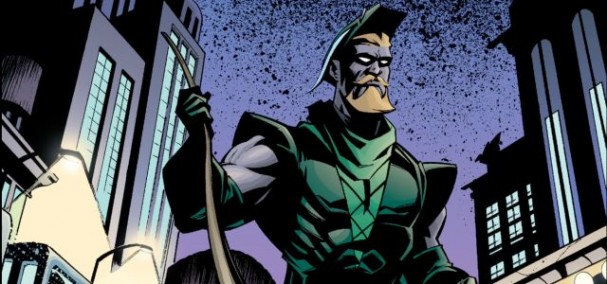
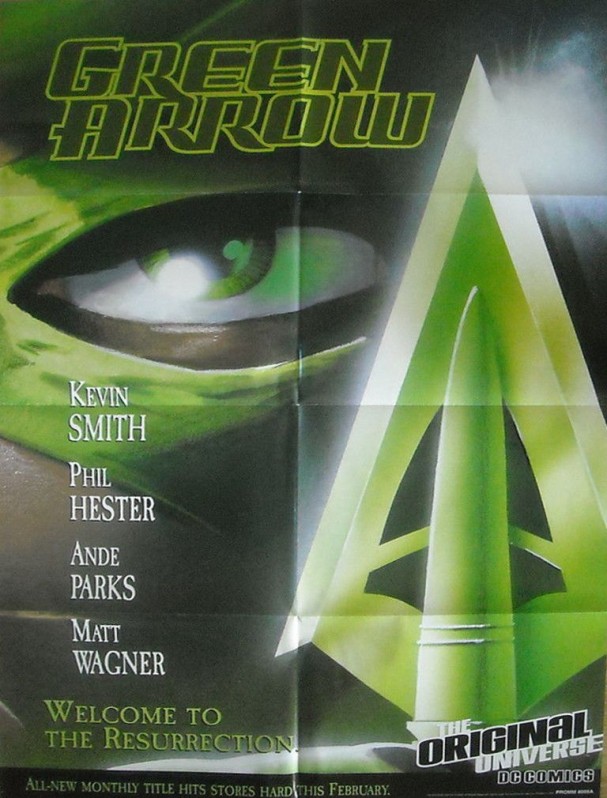


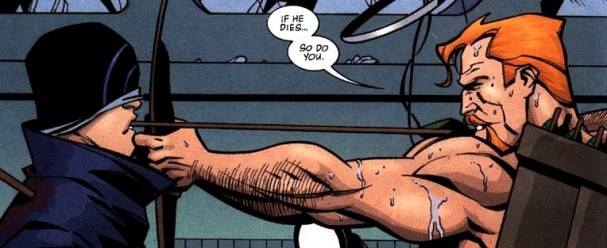


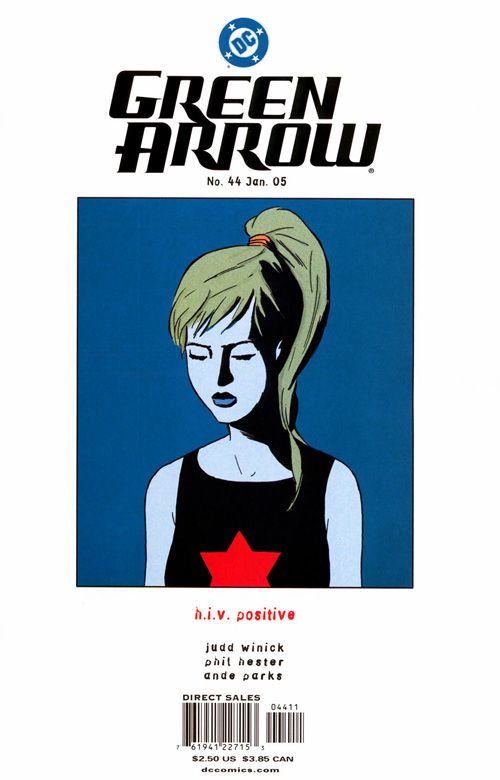
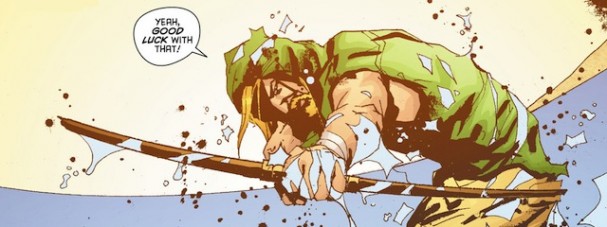


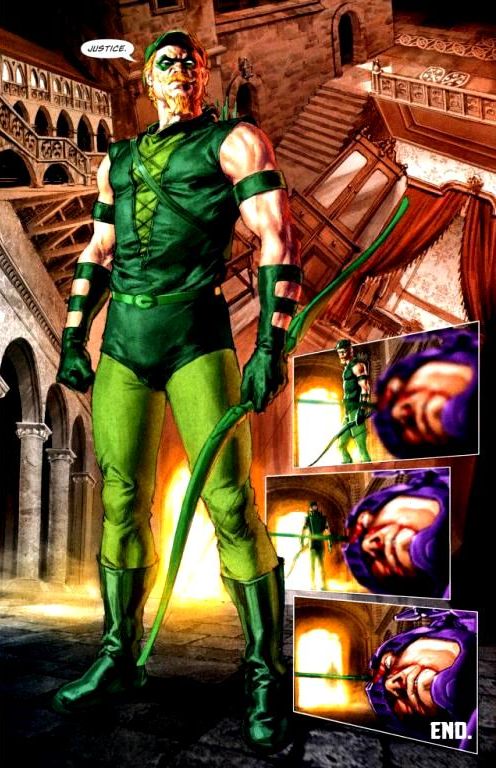
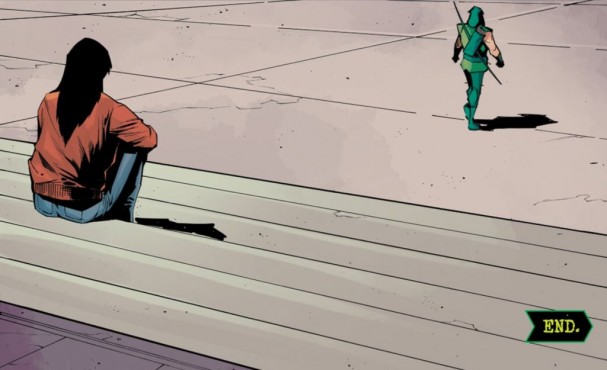

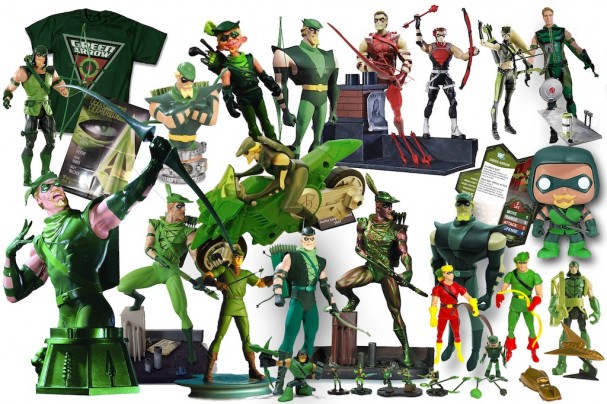

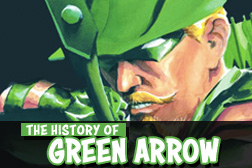
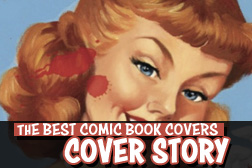
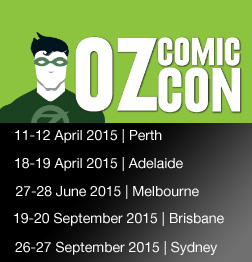





4 pings
[…] >>Proceed to Part 6>> […]
[…] The History of Green Arrow Part 6 – Quiver through Brightest Day (2001 – 2011) Making full use of the exquisite art of Phil Hester and Ande Parks, a series of panels recalls the final pages of Green Arrow #137 (August 1998). Over the course of the series we learn that Hal Jordan, now the latest incarnation of the Spectre, had … Read more on Behind the Panels […]
[…] The History of Green Arrow Part 6 – Quiver through Brightest Day (2001 – 2011) […]
[…] The History of Green Arrow Part 6 – Quiver through Brightest Day (2001 – 2011) – With well over 60 Green Arrow issues across two volumes under his belt, Winick remains one of the most prolific writers on the character to this day, perhaps only challenged by Mike Grell. Following a collaboration with Ben Raab on 6-part retro Green … […]